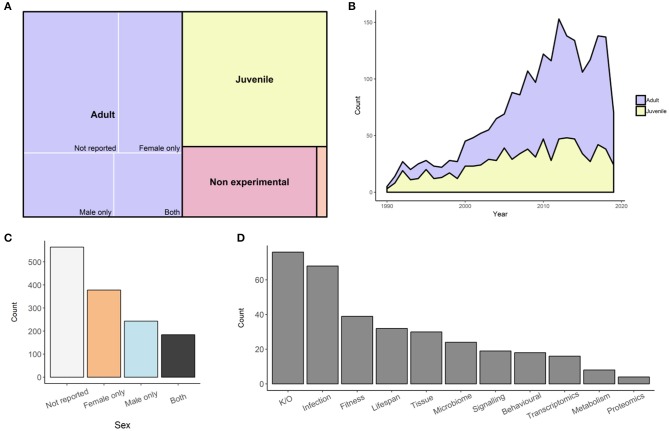Figure 1.
Composition of 2,614 articles on Drosophila immunity. (A) Categories used for all Drosophila immunity studies. Size of each rectangle is proportional to the number of articles within that category. The largest proportion are adult studies (purple; 1,366), followed by juvenile (yellow; 817), non-experimental (pink; 396), and bioinformatic (orange; 30) studies. (B) The quantity of articles published since 1990 until 21 August 2019 that use either adult (purple) or juvenile (yellow) Drosophila. (C) Quantity of adult Drosophila studies that do not report sex used (purple; 561), use females (pink; 378), use males (orange; 243), or use both sexes (yellow; 184). (D) Total number of articles that used both sexes, tagged according to experimental output. Tags are not exclusive, so some articles may have more than one tag. The tags used were gene function knock out (46), survival infection dynamics (47), fitness (39), lifespan (32), tissue specific (30), microbiome (24), signaling (19), behavioral (18), transcriptomics (16), metabolism composition (8), and proteomics (4).

